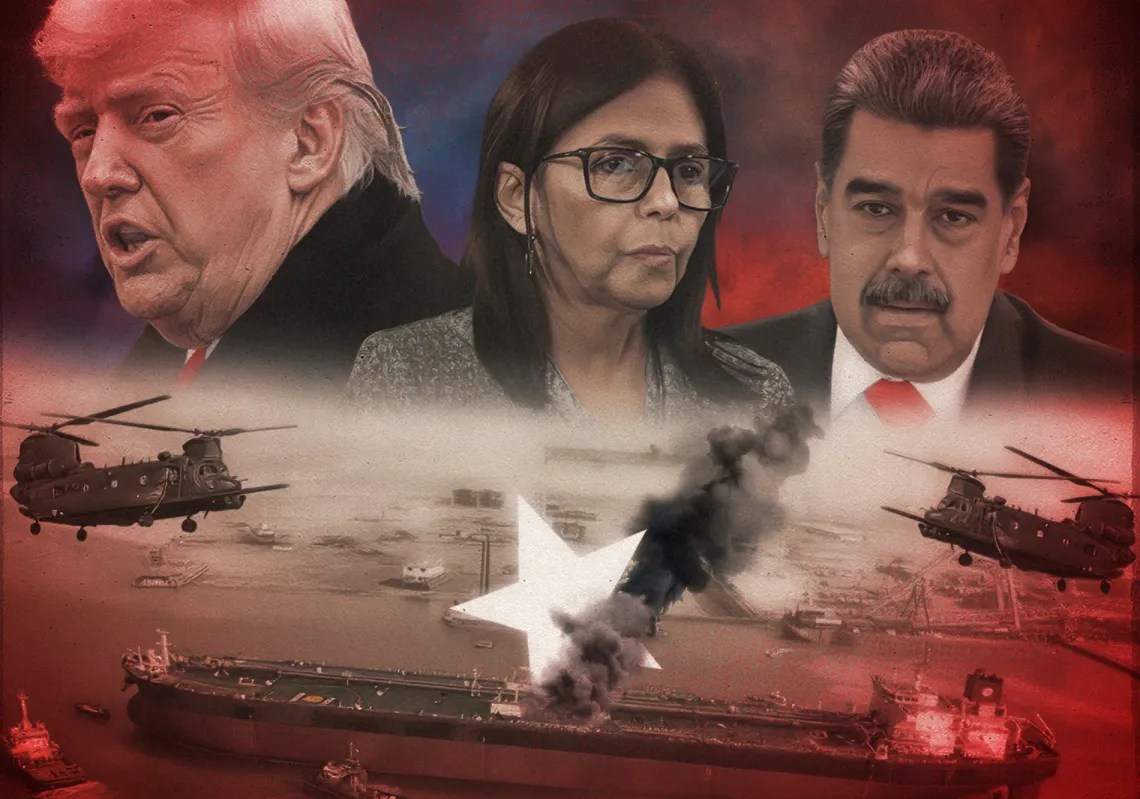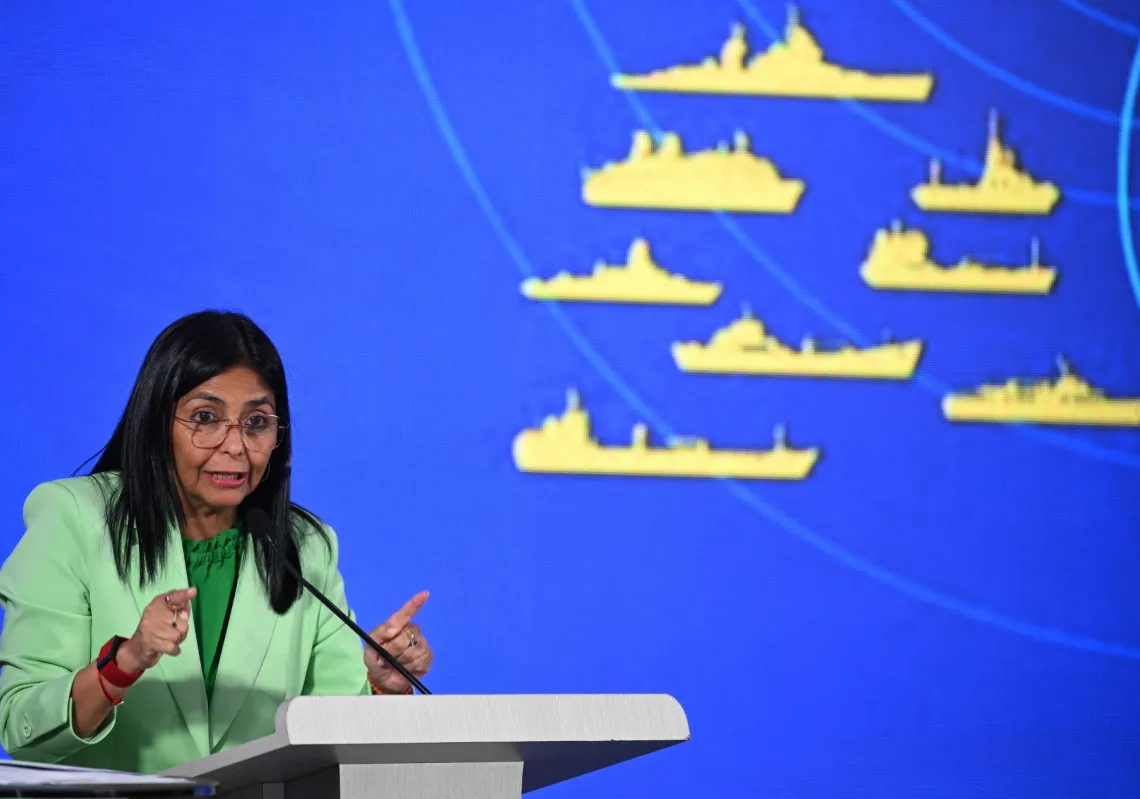When a small group of very senior American defence, intelligence, and diplomatic officials mistakenly added a journalist to a classified discussion they were having over the Signal app about US air strikes in Yemen last month, everyone focused on the security lapse.
Jeffrey Goldberg, editor-in-chief of The Atlantic, was added to a discussion including National Security Advisor Mike Waltz, Vice President JD Vance, Secretary of Defence Pete Hegseth, Secretary of State Marco Rubio, Director of National Intelligence Tulsi Gabbard, and CIA Director John Ratcliffe. Goldberg could hardly believe his luck.
They were discussing US air strikes on Houthi positions in Yemen. The Houthis, which currently control the capital, have been supported by Iran for years and have been attacking both merchant and military vessels in a busy maritime corridor off the coast of Yemen since late 2023 in support of the Palestinians of Gaza. As a result, most commercial operators are diverting vessels around Africa instead, adding to costs.
The Signal mishap and its repercussions—now known as ‘Signalgate’—underscores the broader and growing US preoccupation with securing safe shipping passage through the Red Sea and safeguarding the vital trade route that includes the Suez Canal, the Bab-el-Mandeb, and the Gulf of Aden.
Maritime artery
In good times, the Red Sea is the preferred transit route for around 30% of global containerised trade and 12-15% of all international commerce, including an estimated 6.2 million barrels of oil per day, because it is the most direct sea route from Europe to Asia. Having to sail around the southern and western coasts of Africa adds 7-10 days. Higher insurance, more shipping fuel, and longer staffing hours add to the costs.
Russia’s invasion of Ukraine has only heightened the strategic importance of the Red Sea as Europe reduces its dependency on Russian energy. Other powers are seeking a foothold on the route, including the United Arab Emirates, Russia, China, and Türkiye. This is a region in which the United States has dominated militarily in recent years, so Washington is keeping a close eye on developments.
The Red Sea is no stranger to confrontation. It has long been a theatre of geopolitical rivalry, dating back to the early 19th century, when Britain occupied the city of Aden (in southern Yemen) in 1839 to secure its control over the Bab-el-Mandeb Strait, the strategic bottleneck between the Red Sea and the Gulf of Aden.

The opening of the French-financed Suez Canal in Egypt in 1869 revolutionised global commerce by linking the Red Sea to the Mediterranean, allowing passage between Europe and Asia. The significance of this only deepened over time, shaped by political and military developments that redefined regional and global power dynamics.
In July 1956, Egyptian President Gamal Abdel Nasser announced the nationalisation of the Suez Canal—a defining moment in the struggle for sovereignty. Britain, France, and Israel declared war against Egypt in October of that year, but US pressure forced their withdrawal. This called 'time' on France and Britain as global powers, leaving the US and USSR to fight for dominance in a bipolar, Cold War world.
A decade later, in June 1967, Israel captured the Sinai Peninsula from Egypt, leading to the closure of the canal for eight years. When Egypt and Israel next fought in October 1973, Egypt reclaimed both the Sinai and the canal, reopening it in June 1975. Three wars in three decades underlined the global importance of the Red Sea trade route.
Seeking a foothold
Its role today is obvious. Any disruption in ships' passage has an immediate impact on oil flows and international trade. This keeps the focus on the region and the countries within it, such as Sudan, which has the second-longest coastline along the western shore of the Red Sea (750km) after Egypt and the second-largest exclusive economic zone in the Red Sea (92,500 sq.km) after Saudi Arabia.
According to international law, this gives Sudan sovereign rights to explore and exploit marine resources in this zone, yet despite this strategic maritime wealth, much of Sudan's coastline remains underdeveloped and under-utilised. Port Sudan is the exception, yet its infrastructure is now dated and neglected. Given that Sudan is currently locked in a state of civil war, foreign powers eye an opportunity. But with whom?
Last year, Sudan's government cancelled a $6bn deal with the UAE to develop the Abu Amama port (north of Port Sudan) following accusations that Abu Dhabi was supporting the Rapid Support Forces, which has been fighting the army and seizing great swathes of territory in Sudan's west, including the diamond-rich Darfur region (the UAE denies funding the RSF in exchange for minerals).
Keen for another warm water port, Russia has been pursuing a naval base in Port Sudan since the era of ousted Sudanese President Omar al-Bashir, especially since December 2024, when its Syrian ally Bashar al-Assad was overthrown, imperilling its current Mediterranean naval facility in Tartus on Syria's western coast.















